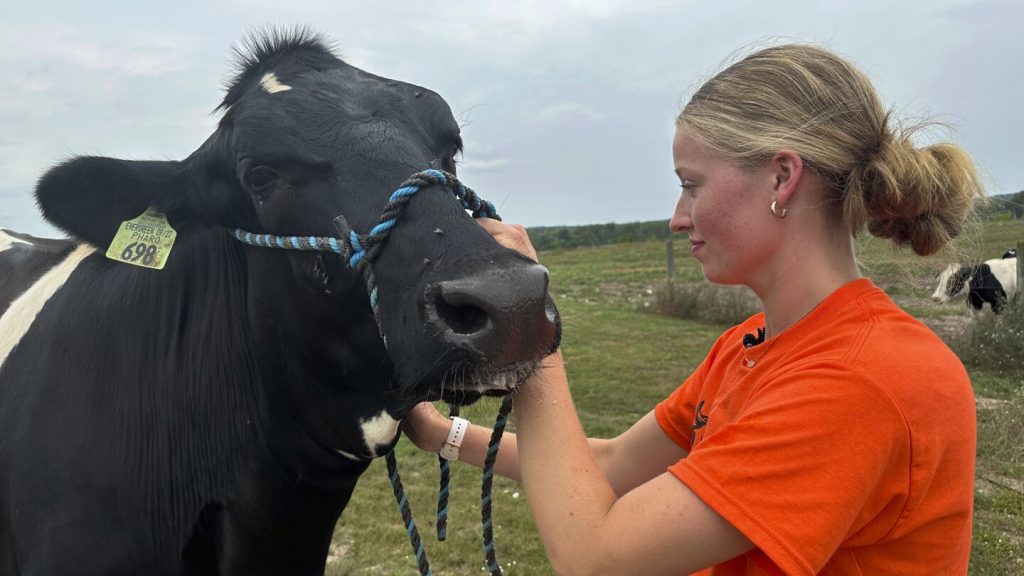The bird flu outbreak that has spread to millions of poultry flocks nationwide has now affected dairy cows as well, leading to significant changes in livestock contests at summer fairs. This has caused disruptions to long-standing family traditions, such as showing prized animals at fairs, for many young exhibitors. The risk to humans from the virus remains low, but it has led to millions of dollars in losses and worker layoffs, particularly in the poultry industry. Michigan has been one of the hardest-hit states, with strict restrictions on showing lactating dairy cattle at fairs until the state has gone 60 days without new cases.
The restrictions on showing dairy cattle at fairs have been particularly hard hitting for young exhibitors like 16-year-old Alison Smith, who had been preparing her animals for competition at the Osceola County Fairgrounds. Smith, who has been exhibiting heifers, cows, pigs, and dairy steers for a decade, expressed disappointment at missing out on another year of showing due to the bird flu and COVID-19 pandemic. The cancellation of dairy cattle competitions at some fairs in Michigan has been a blow to exhibitors like Smith, who have invested significant time and effort into preparing their animals for competition.
Fairs in other states have also made changes to try to prevent the spread of the flu among livestock and people. Some states require proof of negative flu tests for lactating dairy cows, while others have excluded birthing cows and newborn calves from exhibits as a precaution. The CDC has issued guidance for fair exhibitors and organizers to protect livestock and people, including limiting animals’ time at fairs and avoiding direct contact when possible. Despite the alternative activities offered by some fairs, young exhibitors like Smith find them lacking compared to the traditional livestock shows they have participated in.
Kendra Van Order, a 4-H dairy science educator, highlighted the importance of caring for livestock as a way for young people to learn responsibility and develop a sense of competitiveness. She emphasized the emotional impact of not being able to show animals at fairs, noting that it can be heartbreaking for young exhibitors who have dedicated themselves to caring for their animals. Van Order and her team have worked with fairs across Michigan to develop alternative activities to replace traditional livestock shows, but these options do not fully replicate the experience of showing animals at fairs.
As a young exhibitor who is running out of time to participate in 4-H activities before aging out, Smith expresses uncertainty about the future of dairy cattle shows at fairs. She hopes that by 2025, the situation will have improved and that she will have the opportunity to show her animals once again. Like many other young exhibitors, Smith is unsure of what the future holds for livestock competitions at fairs, but she remains hopeful that she will be able to return to the show ring in the coming years. Despite the challenges posed by the bird flu outbreak, young exhibitors like Smith remain dedicated to caring for their animals and participating in the cherished tradition of showing animals at summer fairs.


